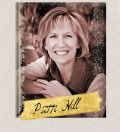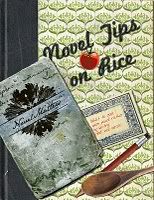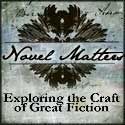 [Author note: If
you’re a pantser, sit down and make yourself comfortable. I'm hoping to show that some pre-writing activity can save you work later without killing creativity. Honest!]
[Author note: If
you’re a pantser, sit down and make yourself comfortable. I'm hoping to show that some pre-writing activity can save you work later without killing creativity. Honest!]
Character,
characters everywhere! But do they have a job to do? That’s a good question to
ask. Just like you’re created with a purpose in mind, your characters should
be, too.
It’s so easy to overpopulate
a story. That’s how I’ve collected so many dynamite deleted scenes. But
creating a cache of deleted scenes is not my objective. I need to look at my
characters as part of an organic whole, not as detached individuals. Each
character should help define the others.
According to John
Truby in The Anatomy of Story, we learn the most about our protagonist when we
can compare her to the other characters on four different levels: by story
function, archetype, theme, and opposition.
Today, I’m going
to talk about the story function of your characters, because this helped me the
most with crowd control—and revolutionized the way I think about developing
characters.
This is my gift
to you after being so snarky about Maass’s chapter, “Standout Characters.”
Deepest apologies again, Mr. Maass, sir.
Every novel starts with a premise. The premise is what
your story is about in one sentence. For instance, the premise of The Hunger Games (HG) is: In post-apocalyptic America, a teen-aged huntress takes her sister’s place
in a last-man-standing battle against representatives of the eleven other districts
of Panem.
Once you know
your premise, you create characters. Start with your protagonist or hero. She’s
the one with the central problem. (Katniss must take care of her sister.) She’s
the one who drives the action in an attempt to solve her problem. (Katniss
volunteers to take Prim’s place in the hunger games.) The protagonist drives
the action, but she isn't without her weaknesses and needs. (Katniss is a
loner, but she must partner with other contestants to survive, knowing she will
later need to kill them in order to solve her problem.)
This is where
things get interesting. All other characters in your novel will represent an
opposition, an alliance with the protagonist, or a combination of the two.
Every character has a job to do to tell your story according to the
premise.
Antagonist: The
antagonist should want the same thing as the protagonist, which will bring them
in direct conflict. This doesn't mean they hate each other, necessarily. Think
of them as opposition, a less brick-wall kind of word. (Katniss has one big
antagonist, the government, plus twenty-three contestants that want to live to
take care of their families, so they must kill her.)
Ally: An ally
helps the protagonist solve her problem. They listen to the protagonist, giving
the reader a chance to hear in the protagonist's own words what she values and wants. Again,
their goals are usually the same, but sometimes the ally has her own goal. (In
HG, Katniss has an ally in Gale, her hunting partner in District 12.
Also, Cinna, her stylist uses his cunning and skill to make Katniss a favorite
in the games.)
Fake-Ally
Opponent: This is where things get really interesting. This character seems to
be on the protagonist’s side, but is really an opponent. This is how twists and
turns are added to a story, as well as tension. (Effie Trinket plays this role
for Katniss. She’s very proper and gathers a team to help Katniss, but she
represents the government, the source of all Katniss’s problems. As the
government’s representative, she facilitates the death of at least one, if not
both of her charges, Katniss and Peeta.)
Fake-Opponent
Ally: These are fun characters to write but not as common in storytelling as
the Fake-Ally Opponent, but HG is full of them. This opponent appears to be fighting the protagonist
but is actually a friend. (Peeta, of course, is the first of Katniss’s
opponents to come to mind, but don’t forget about Rue. The most powerful
Fake-Opponent Ally is Haymitch, Katniss’s supposed mentor. He is drunk and
useless most of the time, but he sees something in Katniss that makes him
believe she is finally the one who can survive. He recruits sponsors and sends
supplies at just the right moment.)
Subplot
Character: Their role is to give another opportunity to define the protagonist
through comparison (they want the same thing or have the same problem but go
after the solution differently) and to advance the plot. In HG, Katniss’s
mother is a subplot character. She wants the same thing, to take care of
Katniss and Prim, but her grief has paralyzed her. In this way we see the
heroic side of Katniss. The mother moves the plot along by her passivity.
Katniss is all Prim has in her broken world.
HG might not have been the best example because there are lots of characters, but
they fit very nicely into their roles. Let’s look at a “smaller” story world to
see how this works. Feel free to
disagree with me.
In The Language
of Flowers, the premise is that a young woman uses flowers to say the things
she cannot say on her quest for love.
Victoria is our protagonist. Her central
problem is that she wants to love and be loved but can’t do either. As a
product of the foster system, Victoria has never properly bonded with a
caregiver, so she probably suffers from reactive attachment disorder (RAD).
She uses the language of flowers she learns from her foster mother to try to
make connections.
Her antagonist is RAD, I think. She sabotages herself in all of
her attempts to make meaningful connections.
The author brilliantly gives
Victoria two strong allies, Renata the florist and Grant the flower grower.
Renata gives Victoria a job to rescue her from homelessness and allows her room
to be ellusive, and Grant is the most patient man in the world, and he loves her, literally and figuratively challenging her flower language.
Victoria’s
false-opponent ally, and this is up for debate, is her caseworker. Name? She
comes off as making hurtful decisions for Victoria, but she introduces her to
the only mother she will ever know because she understands what Victoria needs.
The false-ally opponent is her foster mother, Elizabeth. She needs the same
thing as Victoria, love, and she gives it freely until what she loves more than Victoria is
destroyed. She ends up wounding Victoria worst of all.
The subplot
character is Victoria’s assistant whom she brings in from her old group home.
Again, name? She’s there to compare how two foster system kids react to
emancipation.
So, there you
have it, a purpose-driven approach to populating your novels. Personally, this
information has helped me develop a wider variety of characters with greater capacity for conflict and helped me to
focus the story on the premise by not adding characters who aren't needed. (This is how adorable yet menacing Fred got booted from Goodness & Mercy.)
I would love to
hear what you think of Truby’s story structure approach to populating your
stories. Have you tried this approach? What benefits or hindrances did you experience? How do you keep from over-populating your stories? Have you ever asked yourself while reading a novel, "What is this character doing here?"














14 comments:
This is great, Patti. Very helpful - it made me look very analytically at my novel.
I tried this. I got to know all my characters and their roles before I began writing. It was tedious and not at all exciting. I learned a lot, but I don't think I'll ever finish that novel. I'm classifying it as exercise.
Wow, Patti; this is hugely helpful, in terms of writing and craft.
Yet, suddenly, I want to sit down with you and talk philosophically about the nuances in "The Language of Flowers."
Elizabeth hurts Victoria? (Yes, I get Victoria's perceived hurt, but thought it a product of her dysfunction). Wait, maybe it is Bonnie I need to engage in conversation. Could you both come over for tea, please?
I actually just cleaned out three characters who did little to move the plot forward. In fact, the held it back. In my planning, these characters seemed so promising. But, in the writing, they weren't relevant.
Karen: Be sure to get all the Freds out now!
Marian: Characterization IS challenging. Keep looking for ways that fit the way you think to grow in the craft. Feel free to tweak or toss. You're doing great.
Cherry: Cherry, honestly, why haven't we gotten together for tea? That needs to happen soon.
Susie: Good for you! Irrelevant characters muddy the waters. My Fred created a story line that didn't support my premise. Perhaps I'll introduce him to the NM readers at some point.
Patti, this is an excellent post. I'm printing it out and will study it in depth as I begin to populate my new WIP. You're a master at taking a complex subject and laying it out so it's understandable and useful. Thank you.
Great post!! I went through this and am happy to report that each of my main characters passed muster.
Even the sub-plot characters and one line wonders serve a purpose.
Thanks for this, Patti.
In love stories, the lovers are always protagonist and antagonist --meaning Grant is an antagonist in this novel.
Opposition means that both the protag and the antag what the same thing but go after it in different ways.
It's a nice complex structure the author set up for Language of Flowers.
want not what.
I'm going back to bed.
Sharon: Thanks. Once you know this concept, you start looking for what roles characters play. I'm ruined!
Jennifer: So glad you won't be exorcising any Freds.
Bonnie: Yes, I should have given that generality that lovers are antagonist, but Grant is even more complex because he works to expand her language and her ability to connect, the way an ally would help her. Maybe that's what makes this story so complex, real. Or maybe I'm not remembering the story correctly. That's totally a possibility.
This applies more to Monday's post than today, but I came to it late and just last night I read something from the introduction to Boswell's Life of Johnson, written by Max Herzberg in 1929 that applies.
On page xii of the introduction:
Quoting Boswell on writing:
"Whenever narrative is necessary to explain, connect and supply, I furnish it to the best of my abilities, but in the chronological series of Johnson's life, which I trace as distinctly as I can, year by year, I produce, whenever it is in my power, his own minutes, letters or conversation, being convinced that this mode is more lively, and will make my readers better acquainted with him, than even most of those were who actually knew him ...."
This is good to remember when writing fiction too.
Henrietta: Thanks for sharing this. The essence of what makes a story great hasn't changed. Sure, the 21st century reader lives a different reality than an 18th or 19th or even 20th century reader, but what makes a story great seems mapped into our psyches.
What do I think? Ugh! This scares me. Having to plan out the characters just seems overwhelming and frightening and makes me feel completely inadequate and uncapable.
Josey me too! I had to look at a whole bunch of character information just recently and try not to panic. I realised I didn't have to think about it all. I could just make up people. Then I could go and rewrite, and make them stronger, better, truer. And then I could combine characters that I didn't like so much, or cut them.
I work very intuitively. I plan my plot, but planning everything else just scares me.
Post a Comment